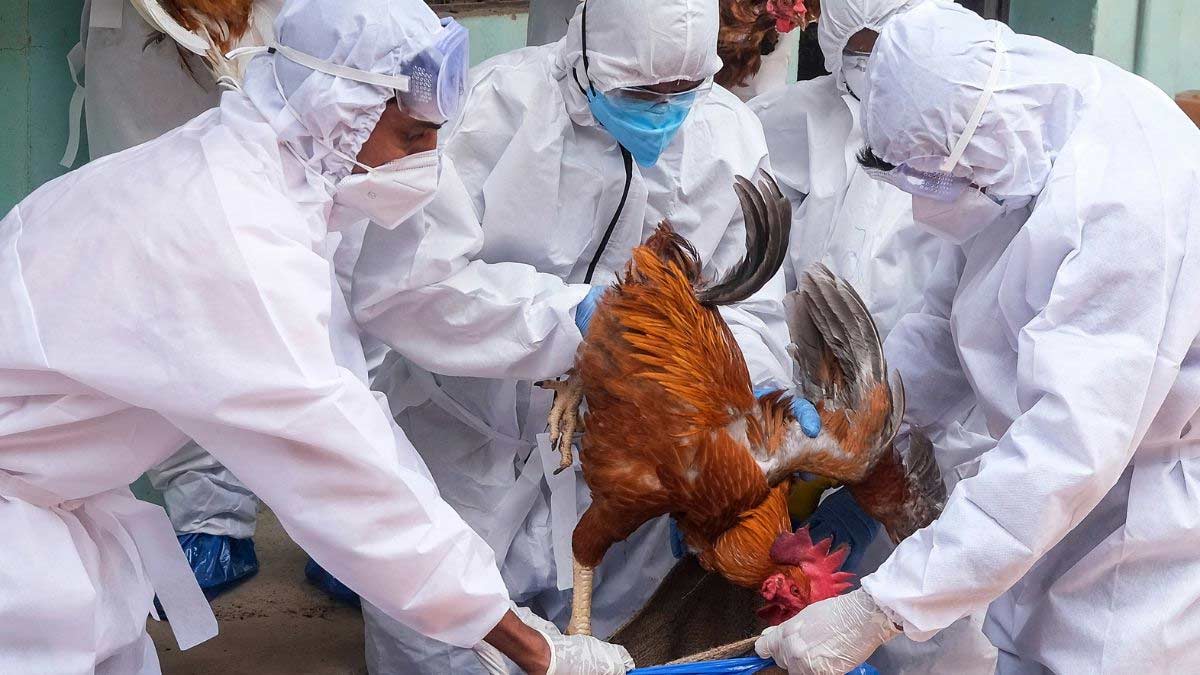
Kerala's serene landscape in Alappuzha district is now marred by the spectre of a bird flu outbreak, sending ripples of concern through health authorities and local communities. The confirmation of avian influenza, particularly in ducks reared within specific areas, has sparked urgent efforts to contain its spread and protect public health. Bird flu, scientifically known as avian influenza, poses a significant risk not only to avian populations but also to human health, with the potential for transmission and severe illness.
Table of Content:-
Against this backdrop, understanding the nature of the virus, its symptoms, risk factors, and preventive measures becomes paramount. Let’s delve into the intricacies of the bird flu outbreak in Kerala's Alappuzha, shedding light on its implications and offering insights into the strategies required to combat this pressing public health challenge.

Identification and Spread of Avian Influenza
The outbreak was first detected in an area of Ward 1 of Edathva Grama Panchayat and another area in Ward 3 of Cheruthana Grama Panchayat. Authorities confirmed the presence of the avian influenza virus (H5N1) after samples from the infected ducks tested positive. While bird flu primarily affects birds, the potential for transmission to humans is a significant concern.
Understanding Bird Flu: Symptoms and Risks
As per Dr Manish Itolikar, Consultant Physician, Fortis Hospital, Mulund, bird flu, caused by various strains of the avian influenza virus, including the highly pathogenic H5N1, poses a dual threat to both avian populations and human health. While transmission between humans is rare, the virus can cause severe illness and even death in those infected.
Also Read: Divyanka Tripathi To Undergo Surgery After Arm Fracture; Understanding Adult Forearm Fractures
Symptoms of bird flu in humans mirror those of conventional influenza and may include cough, fever, respiratory difficulties, headache, muscle aches, and more. Given the potential severity of the disease, early detection and proper precautions are crucial.
Risk Factors and Transmission
Individuals at higher risk of contracting bird flu include poultry farmers, travellers to affected areas, those in close contact with infected birds, and healthcare workers. Transmission occurs through contact with infected bird secretions, faeces, or surfaces contaminated by the virus.
Diagnosis and Treatment
Diagnosing bird flu involves specialized tests, including the influenza A/H5 real-time RT-PCR primer and probe set. Early treatment with antiviral medications such as oseltamivir or zanamivir can help mitigate symptoms and reduce the severity of the disease. However, prompt intervention within 48 hours of symptom onset is crucial for efficacy.
Outlook and Complications
The outlook for individuals with bird flu varies depending on the severity of the infection and the specific strain of the virus. While some recover with appropriate treatment, others may experience severe complications such as sepsis, pneumonia, or organ failure. Timely medical intervention is essential in mitigating these risks.
Prevention and Precautions
Preventing bird flu involves a combination of public health measures and personal precautions. Good hygiene practices, including regular handwashing and proper food handling, are essential. Additionally, individuals should avoid contact with infected birds or their environments, as well as consume thoroughly cooked poultry products.
Bottomline
The bird flu outbreak in Kerala's Alappuzha underscores the persistent threat posed by avian influenza to both animal and human health. Timely detection, effective treatment, and stringent preventive measures are critical in containing the spread of the virus and safeguarding public health. Vigilance, collaboration between health authorities, and community engagement are vital in addressing this ongoing challenge.
How we keep this article up to date:
We work with experts and keep a close eye on the latest in health and wellness. Whenever there is a new research or helpful information, we update our articles with accurate and useful advice.
Current Version